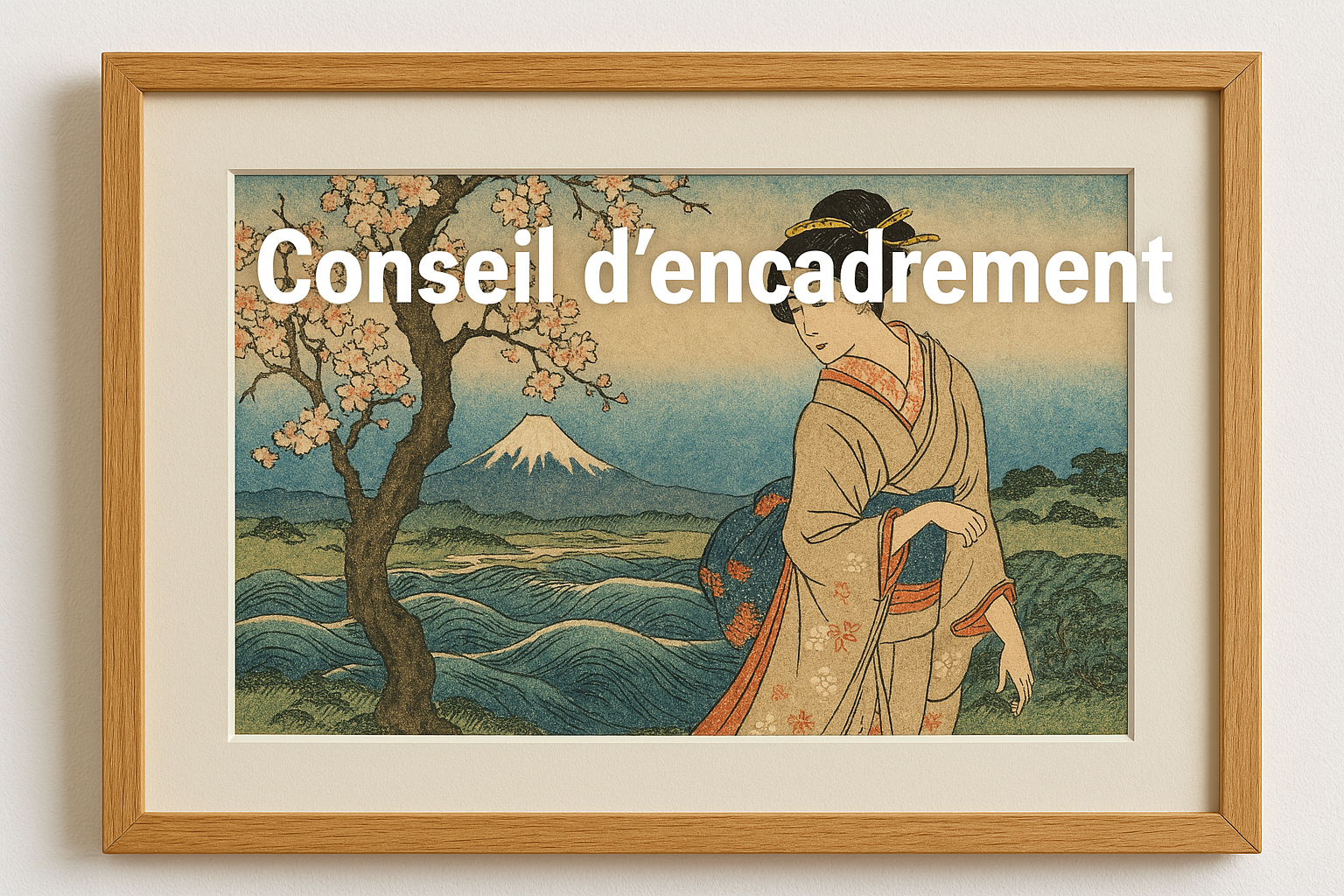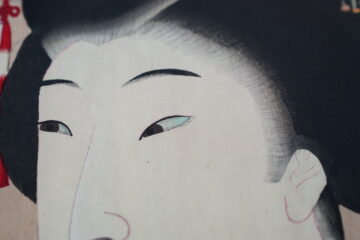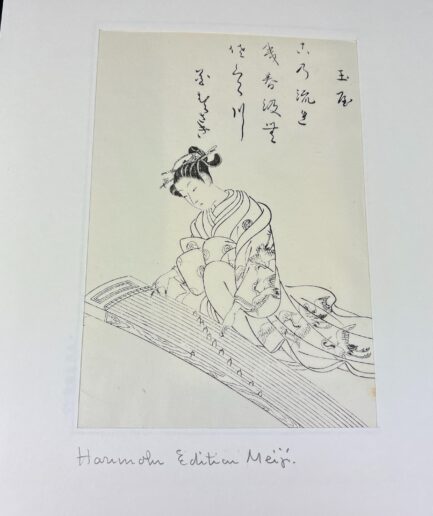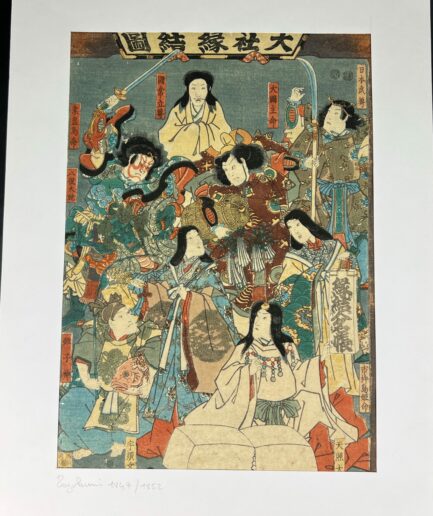Framing a Japanese print is a process that requires both respect for conservation techniques and aesthetic enhancement.
These delicate works, often produced on washi paper, need to be protected from external aggression while being enhanced by a suitable frame.
Choosing the frame and materials
The choice of frame is crucial to preserving the integrity of the print. Hardwood frames, such as oak or walnut, are particularly recommended for their robustness and elegance.
To protect the work from the harmful effects of light, we recommend the use of UV-resistant glass.
This reduces the risk of fading without affecting the print's visibility.
Finally, it is essential to opt for an acid-free mat, which avoids any direct contact between the work and the glass, while allowing air circulation to prevent condensation.
Fixing and mounting
To fix the print to the support, it's best to use strips of lightly adhesive Japanese paper on the reverse of the work. These strips are ideal for conserving fragile papers such as prints, without damaging the reverse.
Chemical glues or scotch tape should be avoided at all costs, as they can irreparably damage the print. In addition, acid-free cardboard should be placed behind the work to avoid contact with potentially corrosive materials.
Spacing between the glass and the print is also essential. This space can be created by using matting or thin rods to prevent condensation, which could damage the work.
Location and storage
The location of the frame plays a key role in preserving the print. It is imperative to avoid exposing the work to direct sunlight or intense light sources.
Similarly, avoid areas close to radiators or other heat sources that could dry out the paper or alter its colors.
A healthy wall with a stable temperature is the ideal place to hang your print.
Call in a framing expert
If you have any doubts about framing techniques, or wish to ensure optimum conservation, we recommend that you call in a professional framer who specializes in works on paper.
He or she will be able to use materials that conform to museum standards and advise you on the best way to enhance your piece.











